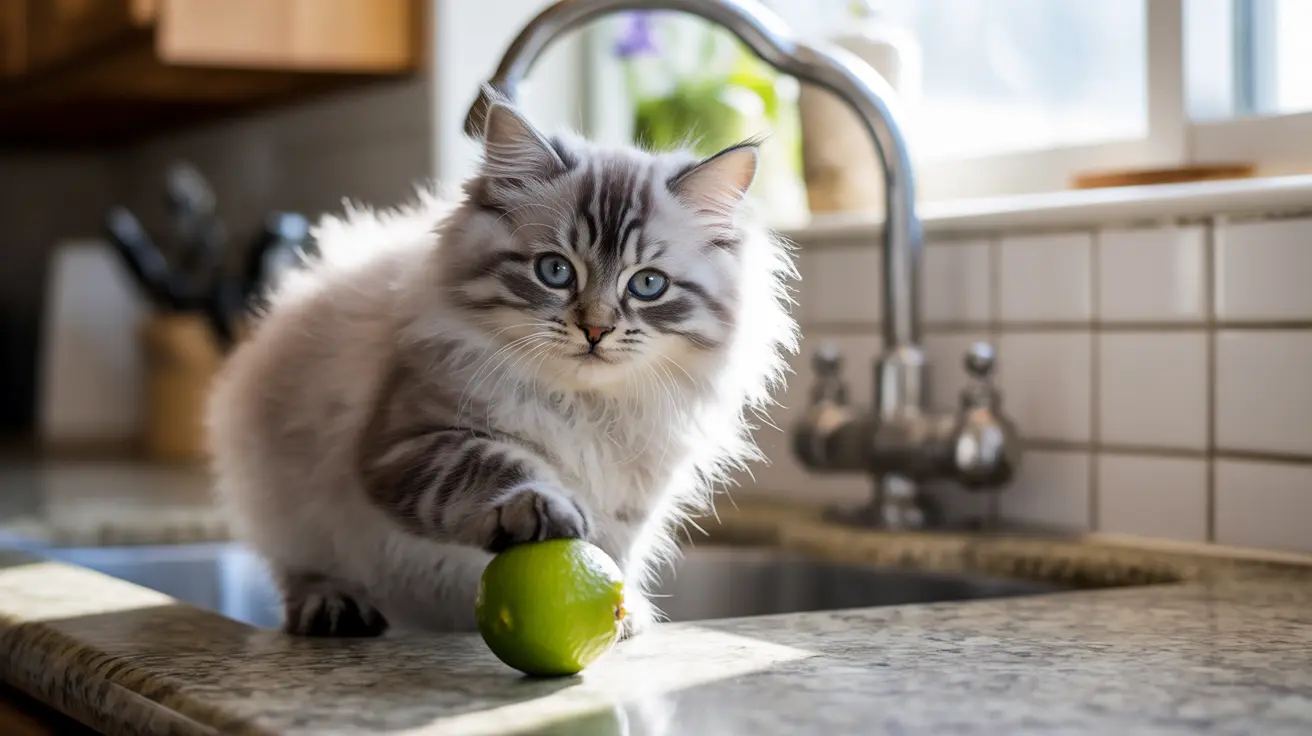Understanding Lime Toxicity in Cats
If you're wondering whether cats can have lime, the answer is a clear and definitive no. Limes are toxic to cats, with every part of the fruit - including the peel, flesh, and juice - posing serious health risks to our feline companions. This comprehensive guide will explain why limes are dangerous for cats and what to do if your cat encounters this citrus fruit.
Why Are Limes Dangerous for Cats?
Limes contain several compounds that are harmful to cats, particularly because felines lack the necessary liver enzymes to process these substances safely. The main toxic components include:
- Essential oils (limonene and linalool)
- Psoralens
- Citric acid
These compounds are especially concentrated in the lime peel but are present throughout the entire fruit. Even small exposures can lead to significant health issues in cats.
Signs of Lime Poisoning in Cats
Immediate Symptoms
When a cat comes into contact with or ingests lime, they may show these early warning signs:
- Excessive drooling
- Pawing at the mouth
- Vomiting
- Diarrhea
- Signs of skin irritation
Severe Symptoms
More serious cases of lime exposure can lead to:
- Depression and lethargy
- Loss of coordination
- Tremors
- Photosensitivity
- Irregular heartbeat
- Low blood pressure
Emergency Response to Lime Exposure
If your cat has encountered lime in any form, taking quick action is crucial:
- Remove any remaining lime from your cat's reach
- Check for signs of exposure or ingestion
- Contact your veterinarian immediately
- Do not induce vomiting unless specifically instructed by a professional
- Document when and how much exposure occurred
Prevention and Safety Measures
To keep your cat safe from lime toxicity:
- Store citrus fruits in sealed containers or closed fruit bowls
- Clean up juice spills immediately
- Avoid using lime-scented cleaning products
- Keep lime essential oils out of reach
- Inform family members about the dangers of lime exposure
Treatment and Recovery
Treatment for lime toxicity typically involves:
- Fluid therapy to prevent dehydration
- Supportive care for symptoms
- Monitoring of vital signs
- Possible skin treatments for chemical burns
- Extended veterinary observation in severe cases
Frequently Asked Questions
Can cats safely eat lime or any part of the lime fruit?
No, cats cannot safely eat any part of a lime. All components of the fruit, including the flesh, peel, and juice, are toxic to cats and should be strictly avoided.
What symptoms should I watch for if my cat has ingested or touched lime?
Watch for drooling, vomiting, diarrhea, skin irritation, lethargy, and changes in behavior. In severe cases, you may notice tremors, weakness, or photosensitivity.
How toxic is lime to cats and which parts of the lime are most dangerous?
Limes are significantly toxic to cats, with the peel being the most dangerous part due to its high concentration of essential oils and psoralens. Even small amounts can cause serious symptoms.
What immediate steps should I take if my cat has consumed lime or lime juice?
Contact your veterinarian or pet poison control immediately, document the amount consumed, and watch for symptoms. Don't wait for symptoms to appear before seeking medical attention.
Are lime-based cleaning products or treatments safe to use around cats?
No, lime-based cleaning products and treatments are not safe to use around cats. These products often contain concentrated citrus oils that can be harmful through direct contact or inhalation.
Conclusion
While limes may be a healthy addition to human diets, they pose significant risks to cats. Understanding these dangers is crucial for cat owners, as even minimal exposure can lead to serious health issues. Always err on the side of caution and keep all citrus fruits, including limes, away from your feline companions. If you suspect your cat has been exposed to lime, don't hesitate to seek immediate veterinary care.






